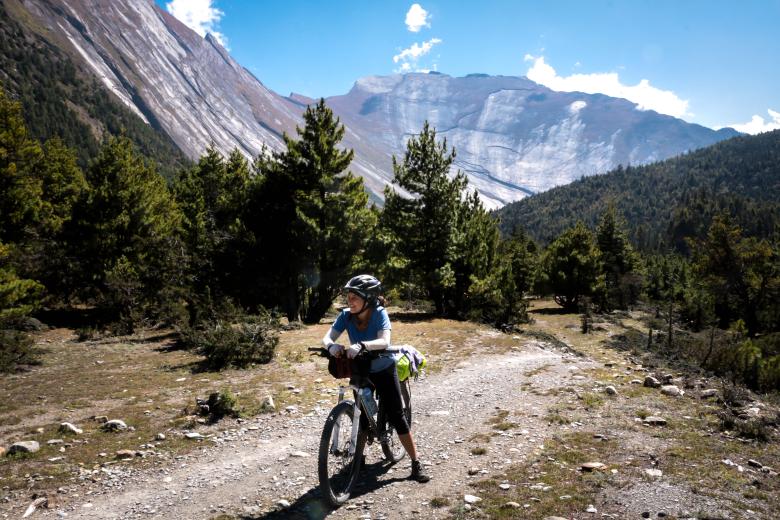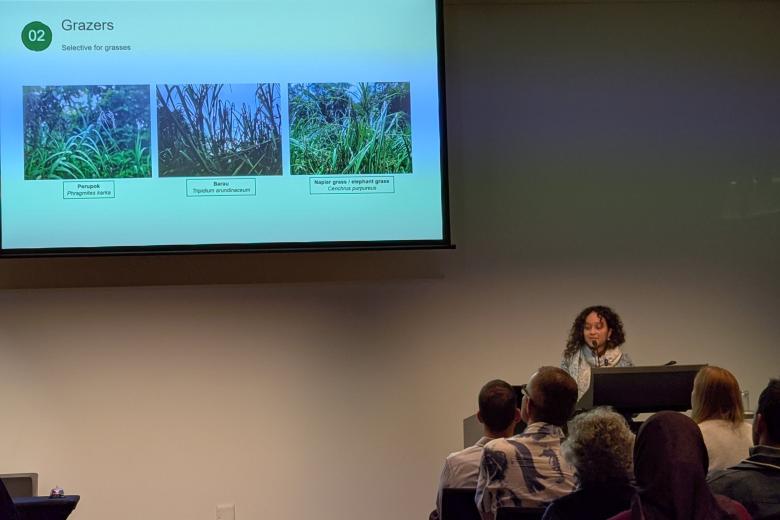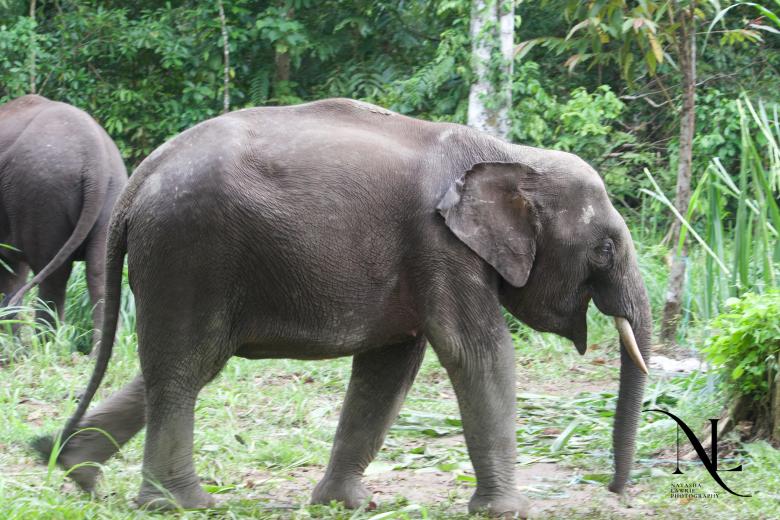UM student Natasha Lawrie studies the Bornean elephant: “I only had one week to find them”
Bornean elephants (Elephas maximus borneensis) are picky grazers, as Natasha Lawrie discovered. A bachelor’s student from the Maastricht Science Programme, she conducted her thesis research in the rainforests of Sabah, on the island of Borneo. There she made surprising discoveries about the feeding habits of this endangered species. Now, she is preparing to swap the jungle for a bike tour from Asia to Europe. What was it like carrying out fieldwork in Borneo? And how does the bike tour tie in with her research?
From Australia to Maastricht
Lawrie’s move to Maastricht was no accident. “After finishing my International Baccalaureate, I did a gap year and travelled through Asia and Europe,” she says. It was during that time that a local host first mentioned Maastricht University. She recalls with enthusiasm, “I knew I wanted to study in Europe, and I was looking for an English-language programme with lots of flexibility. The Maastricht Science Programme ticked all the boxes.”
Lawrie enjoyed studying in Maastricht. “Growing up binational (Malaysian Australian) in mostly Asian countries including Malaysia, India and Kazakhstan, I found the Dutch refreshingly direct and pragmatic.” When the pandemic hit, she had to move back in with her mother in Australia, where she continued the Maastricht Science Programme remotely. The time difference sometimes meant following lectures between one and three in the morning. But she persevered, as she discovered her true passion – ecology – in her second year. “When I started the programme, I thought I’d go into neuroscience, but the ecology course completely blew me away. Deep down, I think I already knew that was where my heart was, probably because I spent my childhood surrounded by nature in Malaysia.”
The text continues below the photo.
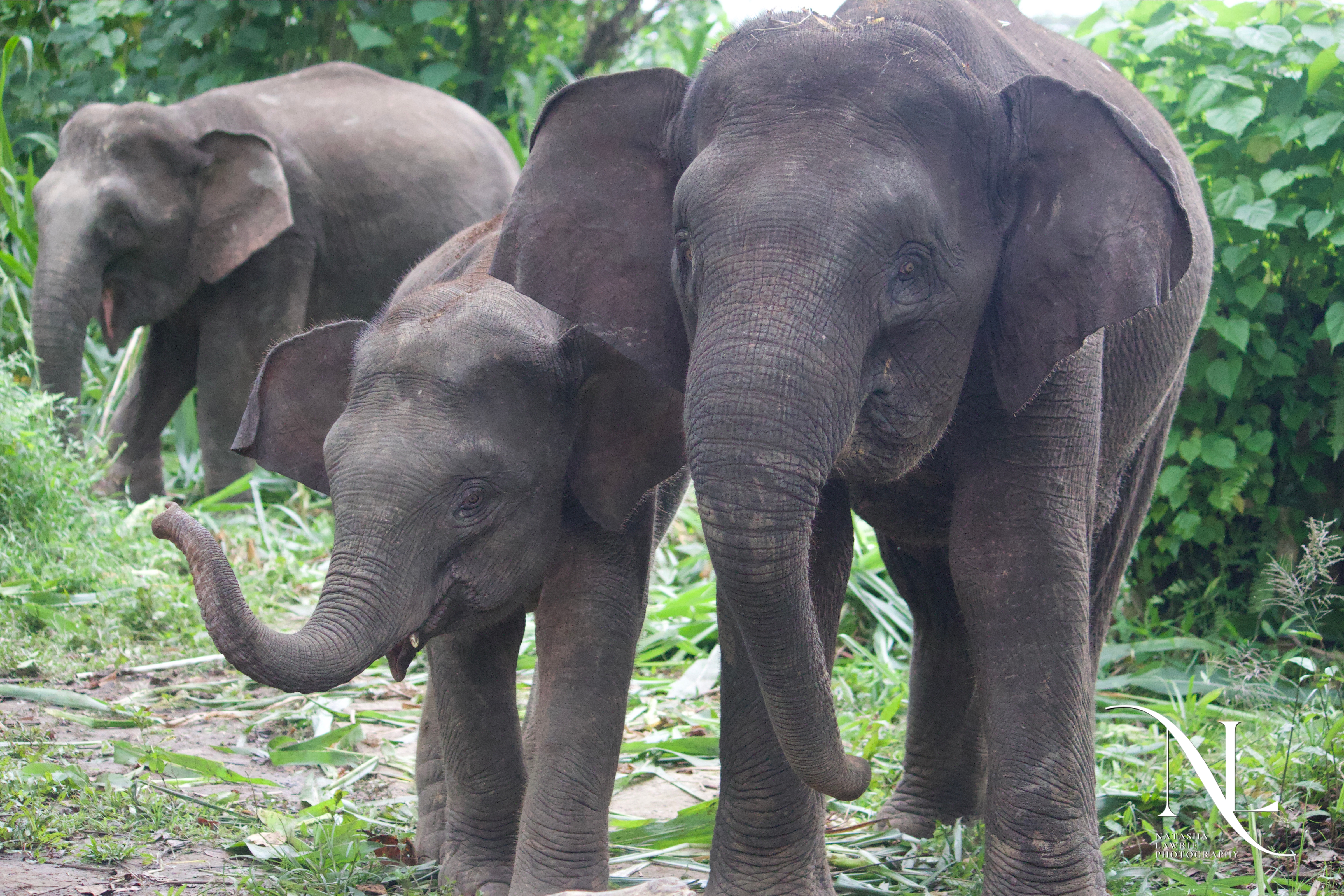
Working as an ecologist
After a year of online studies, Lawrie yearned for in-person courses offering fieldwork components. Therefore, she spent a semester at the University of Queensland in Australia. After that, she worked as an early career ecologist for two years before starting her bachelor’s thesis. “I had a fantastic job at a private consultancy,” she says, smiling broadly. “Alongside a big team of professionals, I had the opportunity to contribute to environmental approval pathways for solar and wind farm projects. This involved surveying for the presence of threatened flora and fauna and preparing advisory reports. The surveys ranged from overnight hiking surveys to comprehensive surveys conducted in four-wheel drive vehicles. We would search for everything ranging from knob-tailed geckoes and rare plants, to Australia’s national icon, the Eucalyptus-loving koalas.”
Inspired by her time in the field, she again opted for an ecological topic for her bachelor’s thesis. “I could choose between a project on either gibbons or elephants. That was an easy decision. I’d always wished for the opportunity to see elephants, and now I was getting the chance to do that in the place where I was born – Borneo.”
Picky grazers
Lawrie ventured into the jungle in search of Bornean elephants. “My field work coincided with one of the most severe floods recorded in the last couple decades, so it wasn’t clear I would find them,” she says. “Luckily, on my second night, I heard their trumpet calls. The next morning, I came face to face with an actual Bornean elephant herd of 25 – 30 individuals. I only had one week to find them before needing to alter my research question, so I was very lucky.”
The study also revealed something surprising. “Many people think these forest-dwelling elephants have a predominant diet composed of high-growing species, like woody plants and palms, but they turned out to be quite picky grazers,” she explains. “They had a strong preference for the grass species barau and also prefer it when it’s not too tall and growing along the river. Elephants are clever – they know the grass contains more nutrients when it’s still short, and they come back to grasslands because grass regrows quicker than trees or palms.”
“On my second night, I heard their trumpet calls. The next morning, I came face to face with a genuine Bornean elephant.”
Natasha LawrieContributing to conservation
This finding is significant for conservation. “Where reforestation efforts are beneficial for providing renewed habitat for other endangered species like the orangutan, the efforts reduce the space available for grasslands, which provide habitat and food for the Bornean elephant,” Lawrie says. “My supervisors already knew that grass is vital for this elephant species. My research shows which species of grass are important. It turns out that we need to see the merit of native grasses as a dominant and sustainable food source for the Bornean elephants and keep them short, so it stays nutritious and attracts the elephants.”
Additionally, elephants have become increasingly reliant on oil palm plantations, where they feed on the young shoots of the invasive palm. This leads to conflicts with local communities. “By planting and maintaining grass strategically, we can provide elephants with an alternative to oil palm plantations. Corridors for wildlife in Borneo should balance the need for both grasslands and forests. Furthermore, the placement of corridors is crucial. They shouldn’t be placed near human dense areas (like villages and tourist hotspots) as the goal is to prevent future human-elephant conflict. Therefore, elephants shouldn’t become too comfortable around humans over extended periods. Wild elephants should stay wild.”
Click on the icon to view all photos.
Cycling from Asia to Europe
Now that her thesis is complete, a new adventure awaits Lawrie. Together with her partner, she plans to spend three years cycling from Asia to Europe. “The idea first came to me seven years ago, during an internship at a bike shop. Someone there told me they had cycled the route, and I thought, ‘I want to do that, too.’ I’ve never forgotten the plan.” She’s not nervous in the slightest. “I’ve been backpacking since I was 13 – my father introduced me to it at a young age. To me, it’s the most authentic way to travel: you’re close to nature and the local people.”
Lawrie and her partner plan to gather stories about nature, culture and sustainability from the places they visit. “I also want to learn more about the conservation issues in different regions,” she says. They have named their project Lestari, which means ‘sustainable’ in Malay. Via Instagram and YouTube, they will share blogs, photos and videos about their journey and mission.
PhD research
What comes after the bike tour? Ideally, Lawrie hopes to pursue a PhD while maintaining her ecological career in Australia. “I prefer a research project at the intersection of ecology and social sciences,” she says firmly. “If I’ve learnt anything from my studies and research, it’s that what makes or breaks nature conservation is whether you can get people on board. During our bike tour, I want to explore different universities and PhD options across Asia and Europe. Who knows what might come of it?”
Text: Romy Veul
Photography: Natasha Lawrie
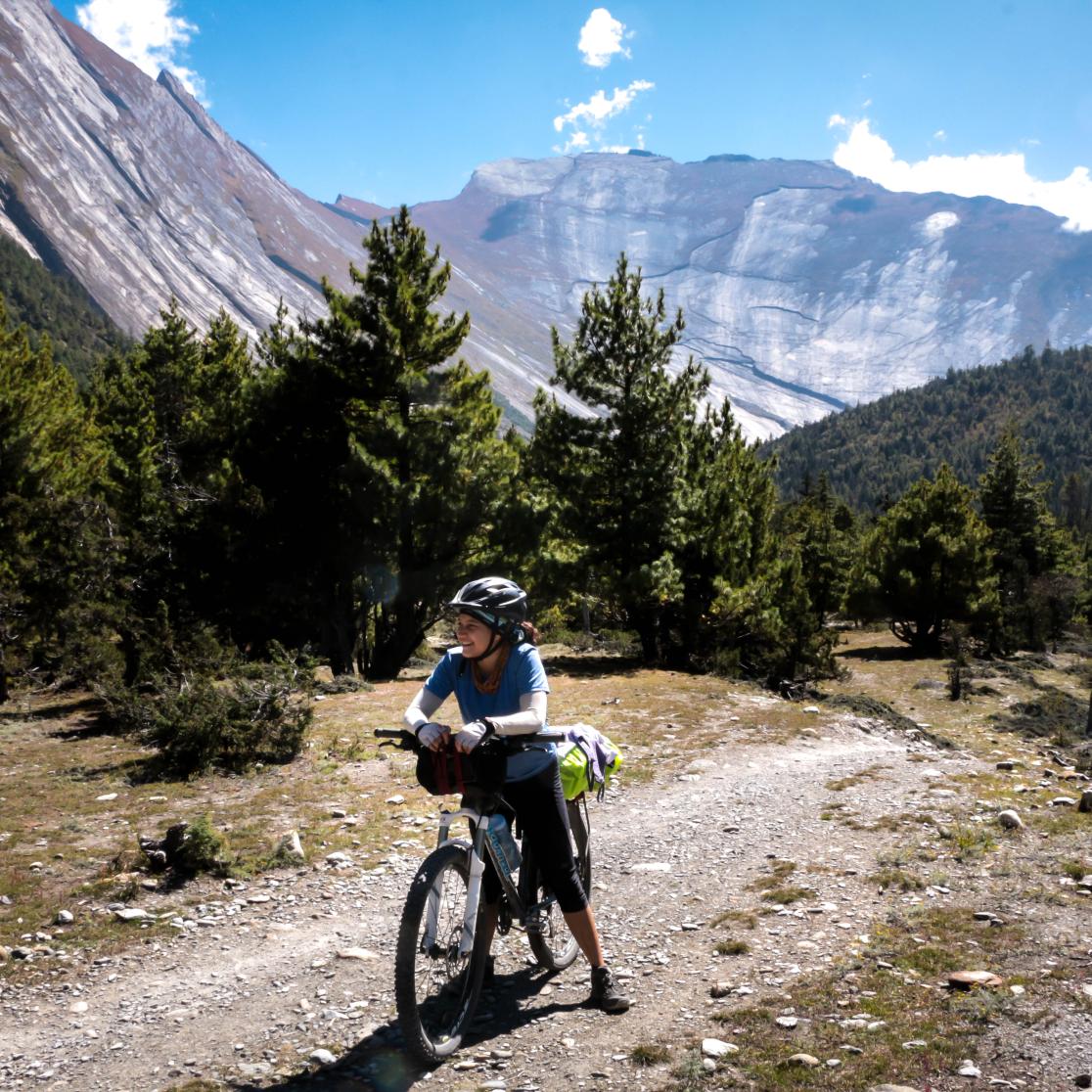
Also read
-
Ron Heeren appointed fellow of the Netherlands Academy of Engineering
Professor Ron Heeren, distinguished university professor at Maastricht University (UM) and director of the Maastricht MultiModal Molecular Imaging Institute (M4i), was appointed as a fellow of the Netherlands Academy of Engineering (NAE) on Thursday 11 December.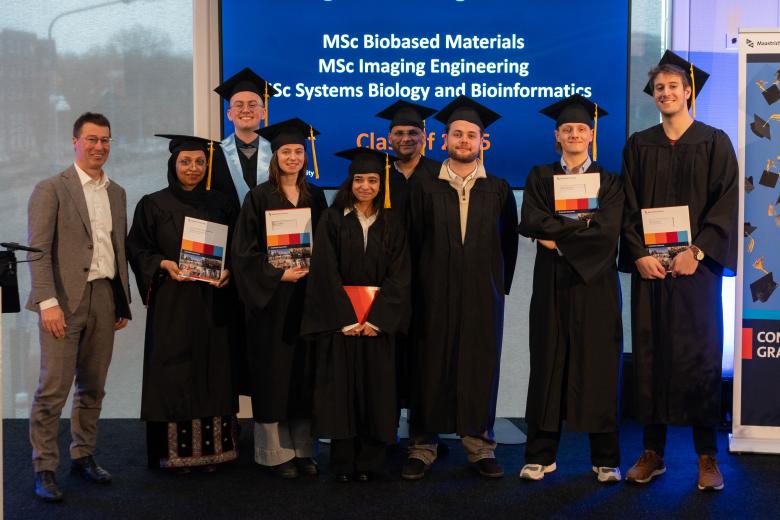
-
UM builds open education and digital literacy into BKO/UTQ
Maastricht University is taking a practical step to support early-career teachers: open education and digital literacy will be built more firmly into the BKO/UTQ.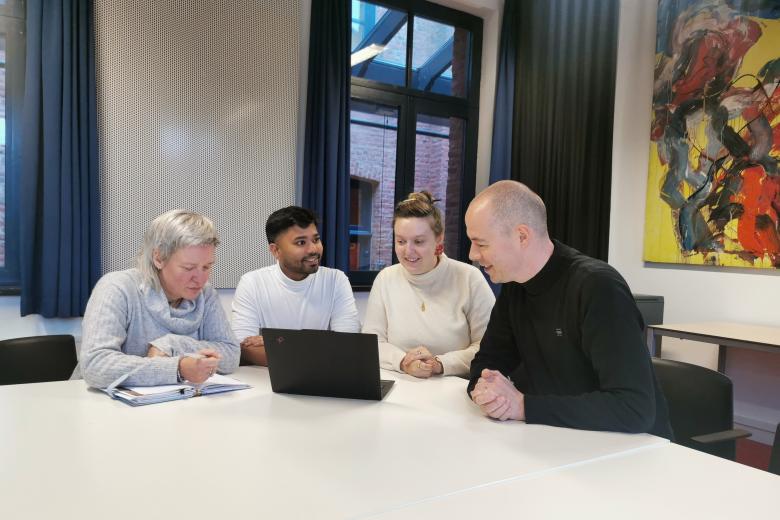
-
Companies unlock Maastricht University’s hidden talent
@Work students serve as a bridge between academia and industry, helping companies recognise the university’s strengths. “We’re a hidden gem that’s gradually being discovered, as more and more people learn that we are one of the largest academic data science and AI programmes in the Netherlands
